All Rise: Resistance and Rebellion in South Africa is a four-part graphic history series. Based on little-known court records, each volume consists of six stories of resistance by marginalized South Africans against colonial and apartheid governments. This first installment, which spans the “Union period” of 1910-48, was researched and written by South African historian Richard Conyngham and each illustrated by a different South African artist. The stories in All Rise combine a variety of universal issues related to justice and human rights with a refreshing narrative medium. By foregrounding “anonymous” protagonists with lesser-known histories, the book breathes new life into a terrain of written history that until now has been dominated by icons.
Discrimination
Halley’s Comet
in the final years of South Africa’s Apartheid era, an unlikely trio-a sheltered white rugby player, a black farmworker’s son, and an Indian shopkeeper’s daughter-discover the consequences of knowing the truth and having the courage to speak it. Halley’s Comet is the coming-of-age story of Pete de Lange, a white 16-year-old schoolboy, set in small-town South Africa in 1986. Pete lives a relatively sheltered life, primarily concerned with girls and rugby- until one January night changes everything. Thrust together with two complete strangers-Petrus, a black farmworker’s son and Sarita, an Indian shopkeeper’s daughter-the trio find themselves running for their lives from the vicious Rudie, whose actions will ripple far beyond that fateful night. This era-defying friendship-sparked by a shared secret- challenges everything Pete thought he knew and believed. And when anti-Apartheid revolutionaries set their sights on the town, it will change the course of the three young people’s lives forever. Halley’s Comet is a story of friendship, love, change, taking chances, hope, a comet, and some pretty cool 80s music. Hannes Barnard is a South African-born author of both English and Afrikaans novels. He debuted in 2019 with the YA novel, Halley se komeet, which he translated into English as Halley’s Comet. In 2020, Wolk, his apocalyptic YA adventure, was released, and coming up in 2022 is his crime novel, die wet van Gauteng. When not writing, traveling, or planning his next adventure, Hannes works in marketing. He has called England and Seychelles home but now lives in Johannesburg with his wife.
Chances In Disguise
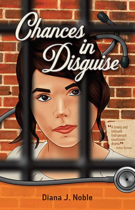
“In this sequel to Evangelina Takes Flight, the young girl who left her home during the Mexican Revolution to start over in a small Texas border town is now seventeen. She has had several years of medical training with her mentor, Doc Taylor, but when a doctor from a neighboring town finds her helping an Anglo woman in labor, he is enraged. He calls her a dirty Mexican and kicks her out. The next day, Evangelina is arrested for murder. The racist sheriff and many of the townspeople believe Mexicans are inferior and that Evangelina must be guilty of using witchcraft to kill the pregnant woman. But she isn’t all alone. Doc Taylor believes in her innocence, as does Cora Cavanaugh, the spirited daughter of a wealthy businessman. And there’s Selim Njaim, a young Muslim with whom she has a forbidden relationship. Soon La Liga Protectora Mexicana assigns someone to represent her, but will Joaquín Castañeda be able to convince the jury that Evangelina is not a murderer? Set in Texas in 1915, this eye-opening historical novel for young adults reveals the racial inequity in the justice system, the discrimination experienced by Mexicans and other non-whites and the limitations placed on women. Teens will relate to the theme of finding confidence and bravery in times of uncertainty, while learning about the harassment, torture and killing of innocent Mexicans and Tejanos in the early part of the twentieth century.”
Separate Is Never Equal
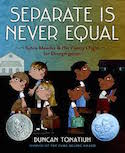
“Years before the landmark U.S. Supreme Court ruling Brown v. Board of Education, Sylvia Mendez, an eight-year-old girl of Mexican and Puerto Rican heritage, played an instrumental role in Mendez v. Westminster, the landmark desegregation case of 1946 in California”–
In the Shade of the Nispero Tree
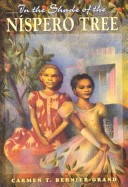
When her mother wants her to be part of the high society world in their native Puerto Rico, Teresa attends a private school but loses her best friend. All Teresa and her best friend and classmate Ana think about is winning the contest for the Junior Queen and Princess of their town in Ponce, Puerto Rico. But Tere’s mother has different ideas for her only daughter. She wants her to be part of La Sociedad, “high society,” and go to a fancy private school. At first Tere doesn’t want to leave her school friends to follow her mother’s dream. She knows her parents can’t afford the luxuries the rich girls take for granted. But when Tere gets into trouble and has a fight with Ana, she quickly changes her mind. Now she finds herself caught between two worlds.
Old Dog
Perro Viejo was taken away from his mother at birth and has known no other life than that of servitude on a sugar plantation. His name, which means “Old Dog,” was given to him by the plantation master because, like the bloodhounds that chased fugitive slaves, Perro Viejo is always searching for the scent of his long lost mother. The only thing that keeps him alive is the memory of Asunción, a beautiful girl he once met while washing his master’s horses at a river. Never to see her again, he closes his heart to all forms of love. Nearing the end of his life, Perro Viejo meets Beira, an old slave who is avoided by the other slaves because they think she is a witch. She warms Perro Viejo’s heart, and together they hatch a plan to escape from slavery. Young readers join Perro Viejo as he finally learns what it is to love — and to feel free.
Cruisers
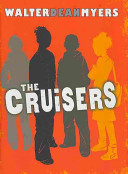
Zander and his friends, Kambui, LaShonda, and Bobbi start their own newspaper, The Cruiser, as a means for speaking out, keeping the peace, and expressing what they believe. When the school launches a mock Civil War, Zander and his friends are forced to consider the true meaning of democracy and what it costs to stand up for a cause. The result is nothing they could have expected, and everything they could have hoped for. Zander Scott and his friends, Kambui, LaShonda, and Bobbi are in trouble. Even though they’re students at DaVinci, one of the best Gifted and Talented schools in Harlem, their grades are slipping, and Mr. Culpepper, the Assistant Principal and Chief Executioner, is ready to be rid of them. When the school starts a unit on the Civil War, and kids split up into Union and Confederate sympathizers, Zander and his crew are given a charge to negotiate a peace between both sides before the war actually breaks out. That’s when Zander comes up with the idea to launch an alternative school newspaper called The Cruiser. What he and his friends learn is that their writing has power to keep the peace, but that words can be weapons, too. Soon everyone at DaVinci is forced to consider the true meaning of democracy and what it costs to stand up for a cause.
See the review at WOW Review, Volume 3, Issue 4
Flix
Flix, a dog born to cat parents, finds himself able to exist in two cultures, marries a cat, and campaigns for mutual respect between cats and dogs.
500 Years of Chicana Women’s History/Anos de Historia de las Chicanans
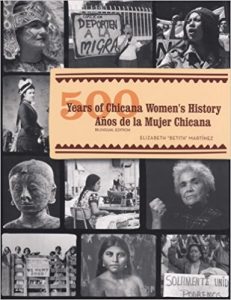 The history of Mexican Americans spans more than five centuries and varies from region to region across the United States. Yet most of our history books devote at most a chapter to Chicano history, with even less attention to the story of Chicanas. 500 Years of Chicana Women’s History offers a powerful antidote to this omission with a vivid, pictorial account of struggle and survival, resilience and achievement, discrimination and identity. The bilingual text, along with hundreds of photos and other images, ranges from female-centered stories of pre-Columbian Mexico to profiles of contemporary social justice activists, labor leaders, youth organizers, artists, and environmentalists, among others. With a distinguished, seventeen-member advisory board, the book presents a remarkable combination of scholarship and youthful appeal. In the section on jobs held by Mexicanas under U.S. rule in the 1800s, for example, readers learn about flamboyant Doña Tules, who owned a popular gambling saloon in Santa Fe, and Eulalia Arrilla de Pérez, a respected curandera (healer) in the San Diego area. Also covered are the “repatriation” campaigns” of the Midwest during the Depression that deported both adults and children, 75 percent of whom were U.S.-born and knew nothing of Mexico. Other stories include those of the garment, laundry, and cannery worker strikes, told from the perspective of Chicanas on the ground. From the women who fought and died in the Mexican Revolution to those marching with their young children today for immigrant rights, every story draws inspiration. Like the editor’s previous book, 500 Years of Chicano History (still in print after 30 years), this thoroughly enriching view of Chicana women’s history promises to become a classic.
The history of Mexican Americans spans more than five centuries and varies from region to region across the United States. Yet most of our history books devote at most a chapter to Chicano history, with even less attention to the story of Chicanas. 500 Years of Chicana Women’s History offers a powerful antidote to this omission with a vivid, pictorial account of struggle and survival, resilience and achievement, discrimination and identity. The bilingual text, along with hundreds of photos and other images, ranges from female-centered stories of pre-Columbian Mexico to profiles of contemporary social justice activists, labor leaders, youth organizers, artists, and environmentalists, among others. With a distinguished, seventeen-member advisory board, the book presents a remarkable combination of scholarship and youthful appeal. In the section on jobs held by Mexicanas under U.S. rule in the 1800s, for example, readers learn about flamboyant Doña Tules, who owned a popular gambling saloon in Santa Fe, and Eulalia Arrilla de Pérez, a respected curandera (healer) in the San Diego area. Also covered are the “repatriation” campaigns” of the Midwest during the Depression that deported both adults and children, 75 percent of whom were U.S.-born and knew nothing of Mexico. Other stories include those of the garment, laundry, and cannery worker strikes, told from the perspective of Chicanas on the ground. From the women who fought and died in the Mexican Revolution to those marching with their young children today for immigrant rights, every story draws inspiration. Like the editor’s previous book, 500 Years of Chicano History (still in print after 30 years), this thoroughly enriching view of Chicana women’s history promises to become a classic.
Mei Ling in China City
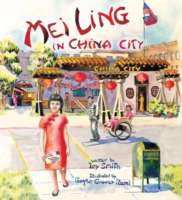
Based on a true story of events during World War II in China City, a 12-year-old Chinese American girl named Mei Ling Lee was separated from her best friend Yayeko Akiyama when she and her family were interned in the Manzanar War Relocation Center. By writing letters to each other, both young girls recounted their lives and hardships in China City and Manzanar. This unprecedented children’s book depicts the cross-cultural experiences of Americans of Chinese and Japanese ancestry during the war years.
